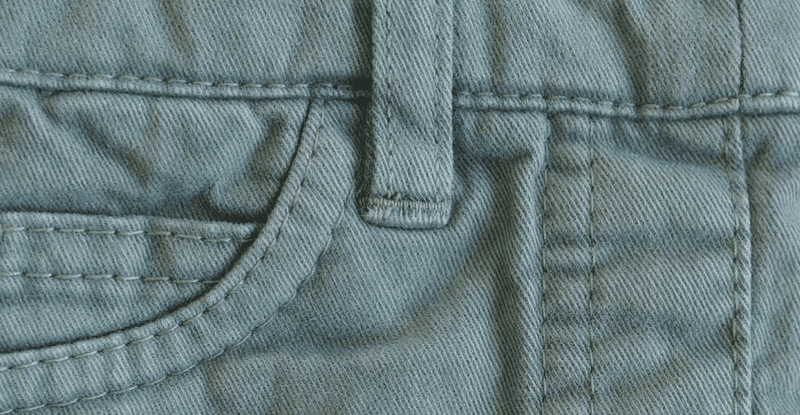With garment dyeing you can create fancy, fashionable color effects on ready-made garments. Thus, you can create unique pieces instead of uniform mass goods. In garment dyeing classical dyeing processes are creatively modified. For example, a conventional direct dyeing can be varied to obtain a modern old dye vintage look.
Cold Dye Effect – Oil Wash Effect
The cold dye technique is a relatively recent development which is used since the beginning of the new millennium. Sometimes the cold dye effect is also called oil wash effect. In the cold dye process the garments are treated just shortly in the cold dye bath in a drum washing machine. The dyeing liquor contains a binder system, such as PERIPRET HKV, a formaldehyde-free acrylate for applications on garments, which is fixing the color pigments on the clothes. After dipping the pieces are centrifuged and tumble dried. For light and medium color shades an additional cross linking agent might not be required. Compared to other dyeing procedures the cold dye technique is an energy- and resource-saving process. It helps you to reduce machine times and to save costs for heating, fixing as well as for additional rinsing steps.
Old Dye on Cellulosic Fibers
The old dye procedure is a classical exhaust dyeing process on finished garment pieces. The dyestuff’s, mainly direct or acid dyes, are only superficially fixed on the fabrics. In this way, after the dyeing you can create a wash out effect, similar to stone-washed blue denim articles, and produce garments with a modern vintage or aged look. In the old dye process the goods are pre-cationized, for example with our formaldehyde-free PERFIXAN F 5000, and subsequently dyed with conventional anionic dye stuffs. The final stone washing step is – depending on the desired intensity of the wash down effect – carried out with or without cellulose enzymes and pumice stones.
Bi-Colored Reserving Effects on Garments
With PERIPRET COV 2 conc. you can create novel multicolor effects – for example bright/dark or bicolor – on garments. For reproducible dyeing effects the dyeing liquor which contains PERIPRET COV 2 conc. – for bicolored effects with additional PERICOLOR P pigments – is applied by spraying or dipping on the desired areas of the goods. Afterwards the fabrics are overdyed with a traditional exhaust dyeing process.
Reference: https://drpetry.de/en/textile-news/fancy-color-effects-on-garments.html

